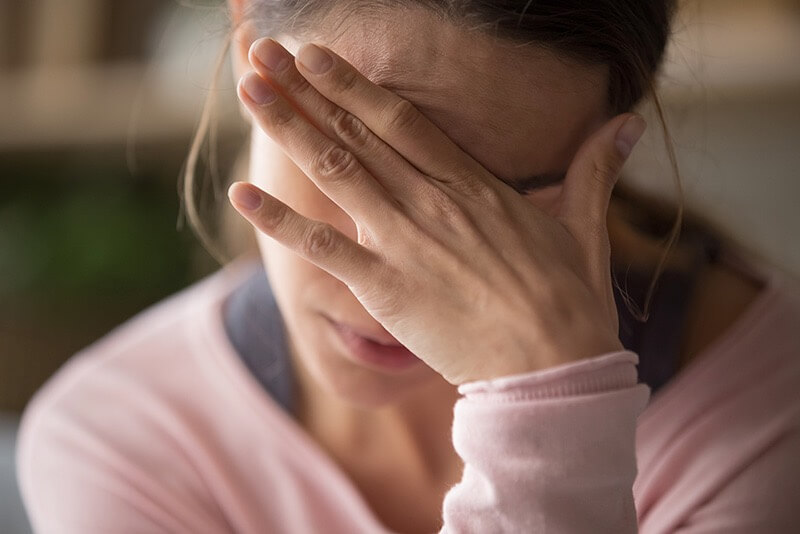BLOG
Suicide Clean Up: A Guide On What To Expect
Losing someone you love to suicide is often a difficult and distressing time for those involved. Not only are you left in a state of shock and grief, but oftentimes, family members or close friends will also have the difficult task of dealing with the remediation of the property.
But before you go ahead and attempt to clean up the scene of a suicide yourself, it might be worth taking a look at the overall process and what skills and equipment are required in order to effectively clean up an area where a suicide has taken place.
Why Hire A Professional?
No family member or property owner should attempt to clean up a suicide by themselves. While a DIY cleanup might seem like the easier and cheaper option, we recommend leaving this cleaning task to the professionals so the grieving family won’t have to relive the trauma all over again.
Hiring a trained and experienced biohazard cleaner will ensure the area is properly cleaned, decontaminated and properly remediated ensuring the scene is safe and habitable once again. Professional Biohazard cleaning companies have the necessary training and experience in how to handle biohazards and work safely in dangerous environments. They are also trained in how to carry out the process to correctly clean up and dispose of biohazards in a safe manner.
The Dangers Of A Suicide Clean Up
A site where a suicide has taken place will often contain harmful biohazards like blood, bodily fluids, odours and property structural damage. These biohazards can pose a threat to human health through exposure when they are inhaled, come into contact with skin or accidentally ingested.
Professional biohazard cleaners have the knowledge and skills to safely work in and around biohazardous environments. They also know the proper techniques for how to ensure affected areas are safely remediated and no longer pose a danger to people who come into contact with the location.
What’s Required When Cleaning Up After A Suicide
There’s a lot more to suicide clean up than meets the eye. Professional biohazard cleaners who are tasked with cleaning up suicides will often use specialised equipment and cleaning tools that are not often found at home. Therefore it’s best to obtain help from professionals with the necessary tools and equipment including the following:
Cleaning equipment – biohazard cleaners use a mixture of standard and specialist cleaning equipment when cleaning up biohazards. Standard cleaning equipment used by biohazard cleaners are readily found in most homes and include buckets, mops, sponges and cleaning cloths. Biohazard cleaners also utilise specialty equipment including foggers and ozone machines.
Cleaning Chemicals – Professional biohazard cleaners will often use professional strength cleaning chemicals as part of their cleaning toolkit including industrial strength solvents and deodorisers.
Personal Protective Equipment (PPE) – from single-use hazmat suits to respirators, gloves and protective boots, professional biohazard cleaners need to adequately protect themselves.
Biohazard Disposal – biohazards that are removed from the scene need to be safely disposed of to ensure that dangerous pathogens are properly contained and can’t be exposed to others. Most biohazard cleaners will place biohazards into hazmat bags and biohazard bins before they are taken away from the premises and properly destroyed or incinerated.
The Process Of Cleaning Up A Suicide
Professional cleaners need to follow a strict set of procedures when cleaning up a crime scene to ensure cross-contamination doesn’t occur and that they effectively eliminate contaminants, odours and remove any contaminated items and sections of the property that can’t be cleaned.
During a suicide clean up, three zones will be established by the biohazard cleaners:
The Control Zone – the location where the suicide occurred that needs cleaning, sanitation and remediation.
The Buffer Zone – the area where PPE is put on and where items for disposal are kept.
The Clean Zone – where tools and equipment are stored to avoid cross contamination.
After the three zones have been established, the cleaners will then work in three stages:
Stage 1: Cleaning – biohazards including blood and bodily fluids are cleaned up from the control zone (where the suicide occurred). Any contaminated porous items or building structures where bodily fluids have penetrated into that can’t be remediated will then be removed, transported in accordance to strict biohazard waste transportation guidelines and then disposed of safely.
Examples of contaminated porous materials that are often removed from a trauma scene include: mattresses, carpets, curtains, floorboards, upholstery.
Stage 2: Disinfecting – the biohazard cleaners will then sanitise and disinfect all affected surfaces using industrial strength chemicals before wiping down a second time and then testing to ensure all biohazards and bacteria have been fully removed.
Stage 3: Deodorising – the technicians will then use a deodoriser to eliminate any lingering odours.
Help Is Just A Call Away
Cleaning up after a suicide can be traumatic and overwhelming for family and friends, which is where National Trauma (NTCSC) can help. No family or loved ones should have to relive a traumatic event and therefore this task is best left to the professionals.
Get in touch with a professional cleaning team that cares. For over 30 years, the compassionate and discreet team at National Trauma have assisted families and countless others with the task of taking on the burden of trauma and suicide clean up. Contact us anytime 24/7 on 0488 007 675 to discuss your situation.
